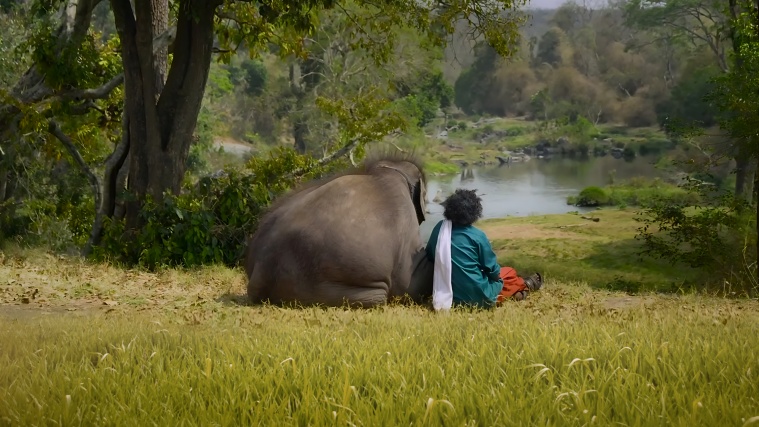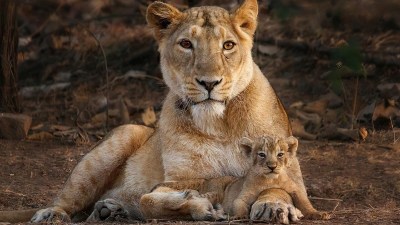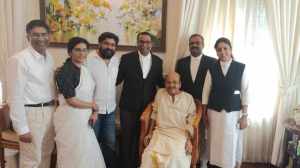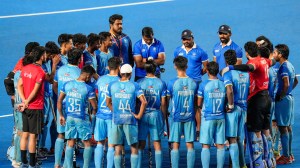Click here to follow Screen Digital on YouTube and stay updated with the latest from the world of cinema.
What the Oscar-nominated documentary The Elephant Whisperers tells us about indigenous communities and the perils of development
Kartiki Gonsalves on her directorial debut, the interdependence of species and why the film is more than just a story of a human-animal family.
 A still from Oscar-nominated documentary The Elephant Whisperers. (Photo: Kartiki Gonsalves)
A still from Oscar-nominated documentary The Elephant Whisperers. (Photo: Kartiki Gonsalves) There’s something about Raghu. The first time that Kartiki Gonsalves saw him, in 2017, he was only three months old. She was driving home to Ooty from Bengaluru, and passing by the Mudumalai Tiger Reserve, when she happened upon the orphaned elephant and his caretaker, walking by the side of the road. “Bomman (the caretaker) could tell how curious I was about Raghu, so he invited me to come along while he bathed him,” Gonsalves recounts. That was it. The documentary filmmaker fell in love with the spirited young elephant and spent the next five years following his story, as well as that of his human “parents”, Bomman and Bellie, and his “sister”, another orphaned baby named Ammu, The story took the form of the short film, The Elephant Whisperers, currently streaming on Netflix and up for an Oscar in the ‘Best Documentary Short Film’ category. “A beautiful bond developed between Raghu and me. We would play together, I helped bathe him, rubbed his tongue — he loves having his tongue rubbed — he would pull my hair, we would stick our tongues out at each other,” Gonsalves recalls.
Viewers might come to The Elephant Whisperers lured by the undeniable charms of Raghu and Ammu expecting, perhaps, the film version of Henry Mancini’s ‘Baby Elephant Walk’ (from the 1962 classic Hatari!). And no doubt there is plenty of humour and warmth to be found in the 39-minute film. But it doesn’t take long for the film to reveal the complex tale it’s really telling —- not only about this one animal-human “family”, but also about the impact of human development on the natural world, the interdependence of species and the centuries of knowledge and near-instinctive understanding of the ways of the forests that indigenous communities like the Kattunayakans of the Nilgiris draw on even today.
 The Elephant Whisperers is directed by Kartiki Gonsalves.
The Elephant Whisperers is directed by Kartiki Gonsalves.
Gonsalves was clear about one thing right from the start: The story she would tell, even though it touches on conservation and the impact of human development on wildlife, would be “positive”. “There are so many depressing things that one could have focused on,” she says. For example, Raghu was orphaned when his mother wandered into a human settlement looking for food during a prolonged drought in the region and was accidentally electrocuted. Those who follow the news in India are familiar with this story, coming from Kerala, Tamil Nadu, Assam and other parts of the country, of elephants, whose habitats have been relentless encroached upon, wandering far and wide in search of food and water, often meeting death through electrocution, train accidents and poisonings. It is only too easy to tell yet another dire tale of a species on the brink, pushed there by human activity. In spirit, then, Gonsalves’s film is closer to the Oscar-winning 2020 documentary, My Octopus Teacher, which also depicts an inter-species bond, weaving a larger story of how befriending even one animal has the potential to open the human heart and mind to the rest of the living world.
 A still from The Elephant Whisperers. (Photo: Kartiki Gonsalves)
A still from The Elephant Whisperers. (Photo: Kartiki Gonsalves)
The Elephant Whisperers is Gonsalves’ directorial debut. Before this, she’s worked as cinematographer on nature documentaries and as a photographer. Her natural inclination, she says, is not only for documenting the forests themselves and the wildlife they contain, but also the human communities that live within them. “To that end, I was sure that I wanted Bomman and Bellie to narrate their own story, without an outsider coming in to talk,” she says. Gonsalves worked on this project with cinematographers Krish Makhija, Anand Bansal (who worked on Gamak Ghar, 2021) and Karan Thapliyal (who did the cinematography for Oscar-nominated Writing with Fire, 2021), suffusing every frame with natural light and bringing to life the lush natural beauty of Mudumalai. As with all nature documentaries, patience and the willingness to show up every day to document the unvarying routines of the elephants and their humans was a must. “I followed Raghu’s story for five years, and had about 450 hours of footage. There are thousands of Raghu baths in there, so many hours of him eating food or playing. But you need to be patient (with something like this), and you get scenes like the one where Bellie tells Ammu to sit down next to her. These are intimate moments, which cannot be planned,” she says.
- 01
- 02
- 03
- 04
- 05


































